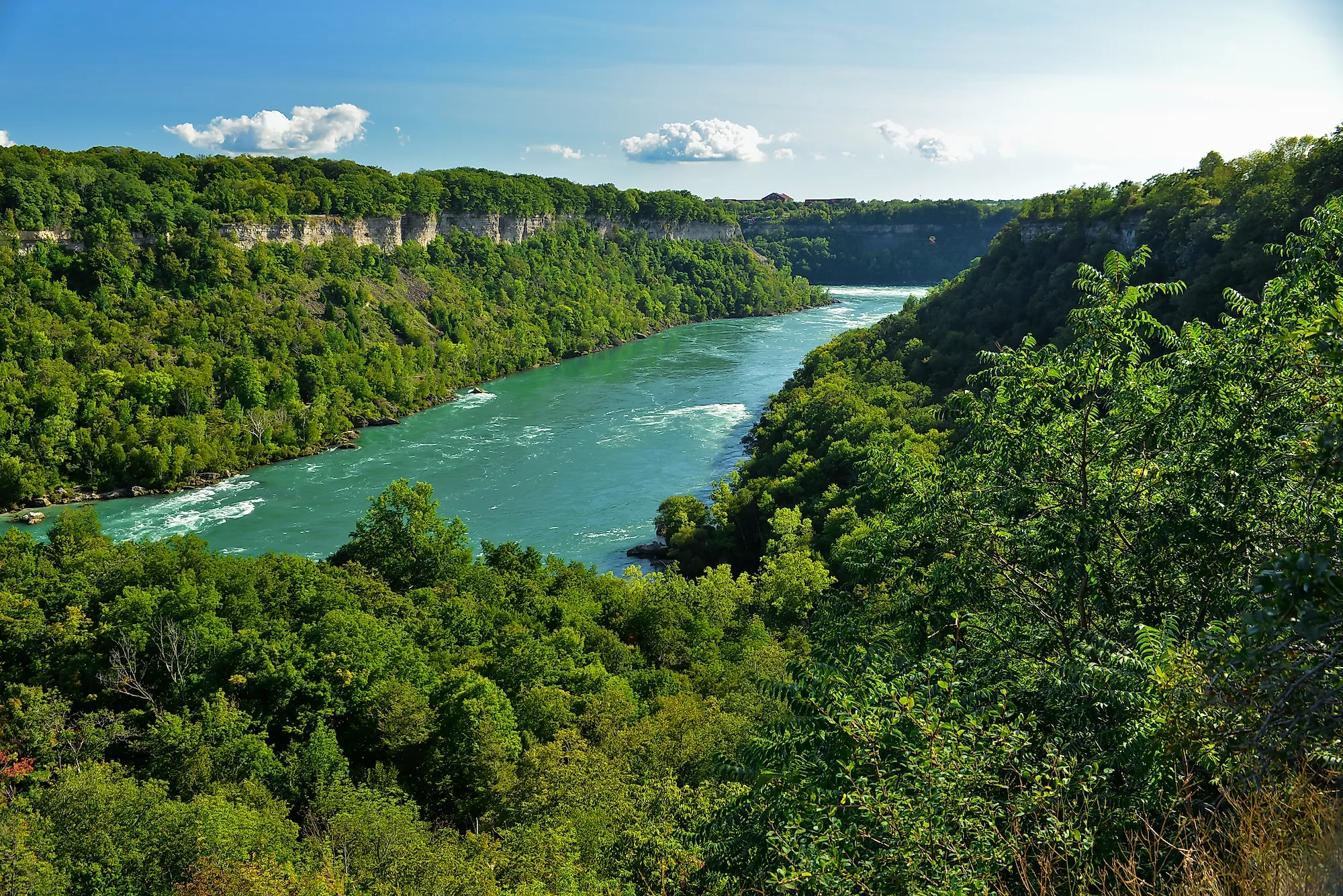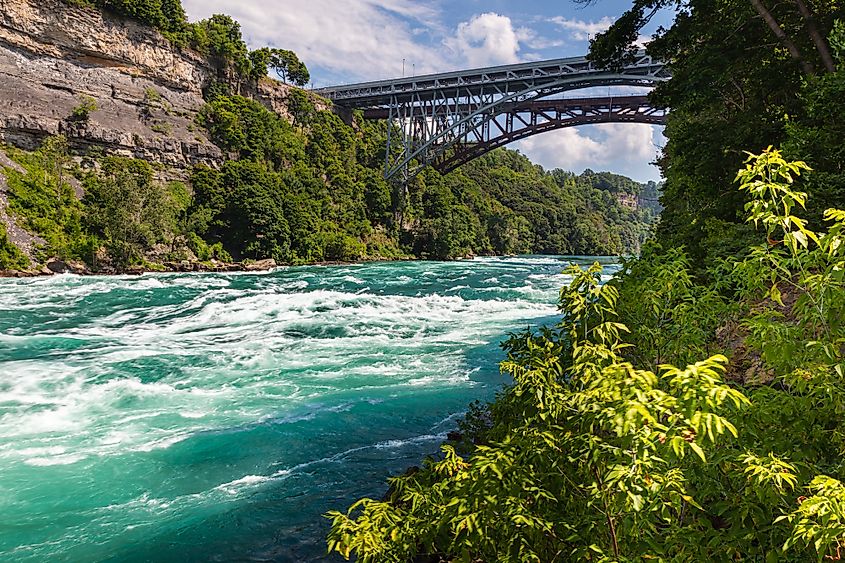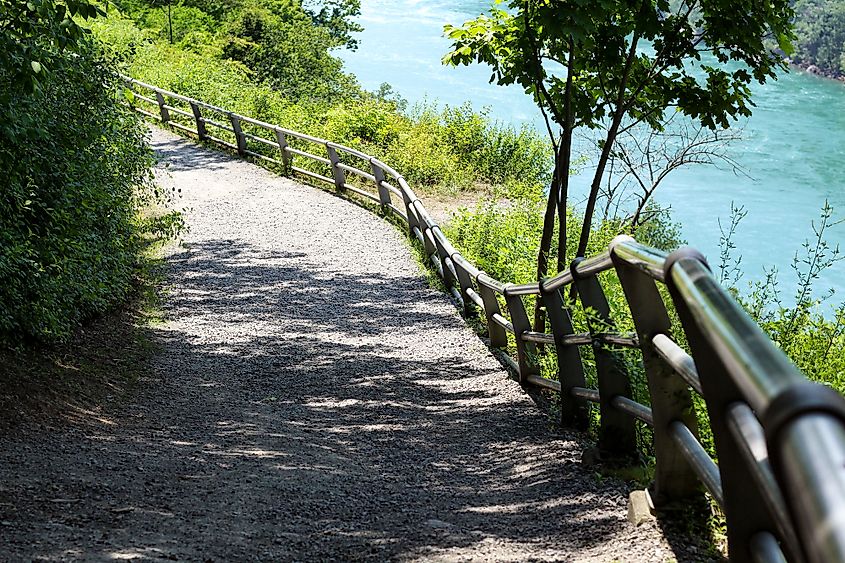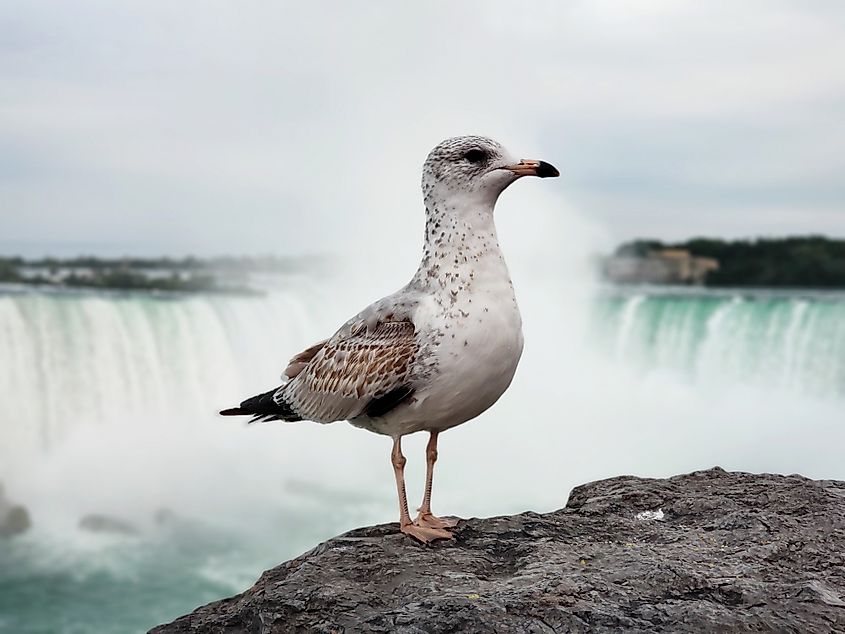
Niagara Gorge
The Niagara Gorge and its network of paths are popular among Niagara Falls residents. The tremendous power of the Niagara River's waters has resulted in a scenery that is a touch more spectacular than the usual riverside. Looking across the river from the Canadian town of Niagara Falls to the American side is a terrific way to examine the varied colored strata of rock, clay, and fossils.
Geography And Geology Of The Niagara Gorge

The Niagara Gorge is an 11-kilometer-long gorge that divides Canada and the United States, carved out by the great Niagara River thousands of years ago. It stretches 11 kilometers (6.8 miles) north of Niagara Falls. Niagara Falls empties into Niagara Gorge, where the cliffs reach almost 1,200 feet above the Niagara River. The Niagara Gorge runs from Horseshoe Falls to the end of the Niagara Escarpment at Queenston Heights.
The peak of the Horseshoe Falls is thought to have been placed where the Niagara Gorge began about 13,000 years ago. Because of the Niagara River's erosion, the falls have gradually shifted upstream! It is no surprise that 20 percent of the world's freshwater flows at 65 kilometers per hour! Engineers stepped in to reroute the water, decreasing erosion from 3 meters per year to 30 centimeters in a decade. The spectacular cliffs that form the Niagara Gorge are the consequence of the erosion of the Lockport dolomite. The canyon rock is a sequence of sedentary layers known as strata - hundreds of millions of years ago, diverse layers of clay, sludge, sand, and organic stuff were forced together to form pressured layers. The Niagara River, which originated from melting ice sheets after the Ice Age 18,000 years ago, essentially dug out many layers from the soil to construct its riverbed.
Hiking Trails Along The Niagara Gorge

The greatest way to observe the geology of Niagara Gorge up close is to hike or walk along the 24 kilometers (15 miles) of hiking and walking trails that run along or near the gorge. Because they are so interwoven, you may hike a single leg, investigate a tiny isolated section (such as north of the whirlpool), or undertake the entire 11-kilometer journey from the falls to the end of the escarpment, which takes an entire afternoon.
There are multiple access sites to the Niagara Gorge trail system. Some of the nicest trails on the Canadian side may be found in Niagara Glen, a magnificent stretch of forest downriver from the whirlpool. On the American side, a connecting route runs the length of the canyon up to Queenston, with access and departure sites including the Niagara Whirlpool, Devil's Hole State Park, and the Niagara Gorge Discovery Center.
Human History Associated With The Niagara Gorge
The earliest people arrived in the Niagara Region around 12,000 years ago, just in time to witness the Falls' birth. The Clovis people lived in Niagara during this period (the Palaeo-Indian Period, which lasted until 9,000 years ago). The Woodland Period lasted from 3,000 to 300 years, with the height of Iroquois culture in southern Ontario. Jacques Cartier departed France in May 1535 to explore the New World. Although he never saw Niagara Falls, he was informed about it by Indians he encountered along the St. Lawrence River. In 1615, Etienne Brule, the first European to view Lakes Ontario, Erie, Huron, and Superior, may have also been the first to witness the Falls. Louis Hennepin, a Recollet priest, saw Niagara Falls in December 1678. Thirteen bridges were built over the Niagara River Gorge between 1849 and 1962. The Niagara Railway Suspension Bridge was completed in 1855 by John August Roebling, the designer of the Brooklyn Bridge. It was the world's first bridge of its kind. Boats were the primary mode of transportation to Niagara Falls between the late 1700s and the middle 1800s. Niagara had one of the earliest electric city car services, and the Queenston/Chippawa Railway transported boat passengers from Queenston to Table Rock and beyond in 1893. A railway was built across the Queenston Suspension Bridge in 1902. Later, it was extended down the lower Gorge on the American side of the river, eventually linking back to Canada at the Upper Arch Bridge. The Great Gorge Route remained in service until the Great Depression. The usage of boats has decreased as more people choose to visit Niagara by car, bus, or rail.
Wildlife In The Area
The Niagara Falls region is home to a diverse range of animals, including mammals, birds, reptiles, and amphibians. During their trip, most visitors spot at least a handful of these species.
Birds

Birdwatchers will be happy to learn that the Niagara area is home to over 300 different bird species. Robins, cardinals, blue jays, chickadees, woodpeckers, wrens, finches, Canada geese, thrushes, and gulls are among the more prevalent species in the region.
Cardinals and chickadees are there all year, but rarer species such as swallows and purple martins arrive in late spring and go in October. There are also many birds of prey in the area, including red-tailed hawks, owls (including the great horned owl, the biggest in the region), sparrow hawks, and turkey vultures. The great blue heron is a common sight along the riverbanks, and there are many other types of waterbirds in the area, notably ducks and mallards.
Mammals
Fans of mammals will not be disappointed too, since there are over 50 species to choose from. Squirrels, skunks, and raccoons live with white-tailed deer, weasels, rabbits, red foxes, and muskrats. Sightings aren't guaranteed, but most walkers see something worth remembering. Black bears and mountain lions were previously widespread in this area, but have since been eliminated.
Lizards And Amphibians
The region near Niagara also has one of the most diverse amphibian and reptile populations. There are a few snake species in the region, including the common garter snake and milk snake. There were formerly quite a few of the deadly timber rattlesnakes, which were feared by the locals, but they are now thought to be extinct in this region, with the last one observed in 1959. Frogs and toads are also prevalent, with bullfrogs and the American toad appearing in numerous photographs taken by visitors. If it's a sunny day, the turtles may come out to warm themselves in their marsh habitats. This area is also home to the painted turtle and the snapping turtle.
Niagara Gorge has a lot to teach you about the formation of its rock strata, the sights to view, the plants and trees that thrive there, and the variety of birds that calls it home. But seeing the sites for yourself is the greatest way to take it all in.











